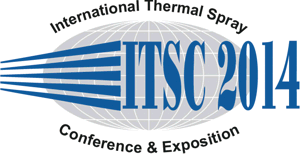
|
3734 |
|
Wednesday, May 21, 2014, Hall F 12:10 PM Cold Gas Spraying 1 |
|
Influence of spray angle on the cold spray of Al for the repair of aircraft components |
|
Quentin Blochet* / Material Research Center, MINES ParisTech, France Francesco Delloro / Material Research Center (CNRS 7633) MINES ParisTech, France François Borit/ Material Research Center (CNRS 7633) MINES ParisTech, France Franck Nguyen/ Material Research Center (CNRS 7633) MINES ParisTech, France Michel Jeandin/ Material Research Center (CNRS 7633) MINES ParisTech, France Kevin Roche/ Dassault Aviation, France Gilles Surdon/ Dassault Aviation, France |
|
Al-based light alloys are widely used for aircraft applications due to their high specific properties. However, some Al-based components can undergo serious damages from erosion and/or corrosion. Subsequent repair is therefore required, which can be all the more uneasy because the geometry of the zone to be repaired is complex and because the level of properties to obtain is high. Cold spray is claimed to be a promising industrial candidate process to meet these two requirements and compete with current conventional repairing. The present work deals with the influence of spray angle on deposition of cold-sprayed Al particles, including when mixed to SiC powder addition for wear-resistance applications. For this, experimental spraying tests were conducted in parallel with the modeling of particle deformation and coating build-up as a function of the spray angle, substrate roughness, particle characteristics and substrate geometry. The modeling part of the work involved a finite element (FE) analysis of particle deformation at the impact in addition to a so-called morphological simulation of particles deposition. The study therefore exhibited an approach to both splat and coating behaviors. Coating-substrate bond strength and particle adhesion were determined using LAser Shock Adhesion Testing, namely LASAT®. Results showed high deformation coupled to rather low adhesion of splats for low spray angles, i.e. lower that 45° typically. Results from modeling were shown to be in keeping with those from experiments, especially when using substrates which had been machined previously to simulate specific geometries in actual parts. These are discussed in the light in observation and analysis of splat-substrate interfaces versus spraying conditions. |